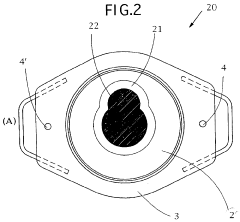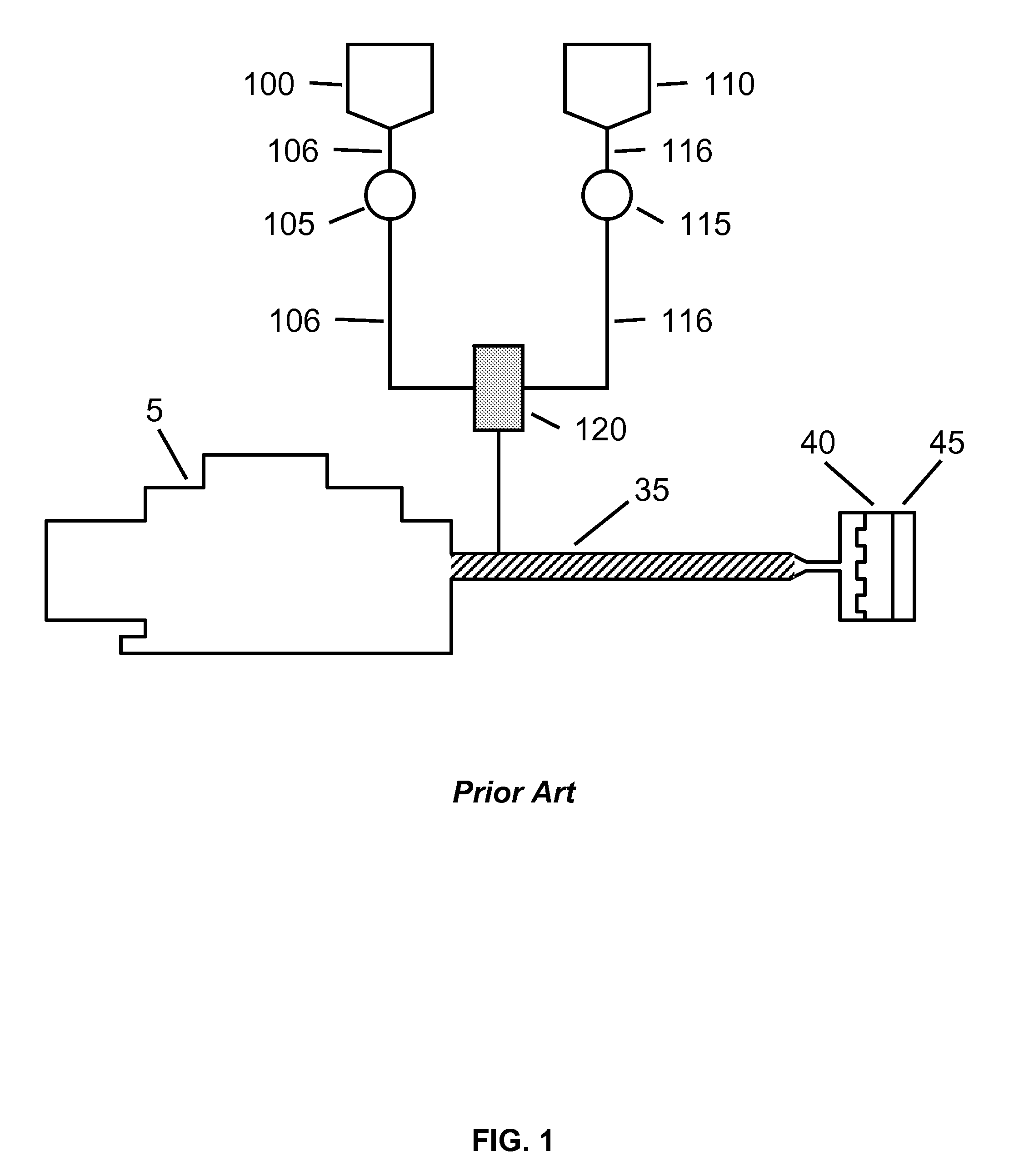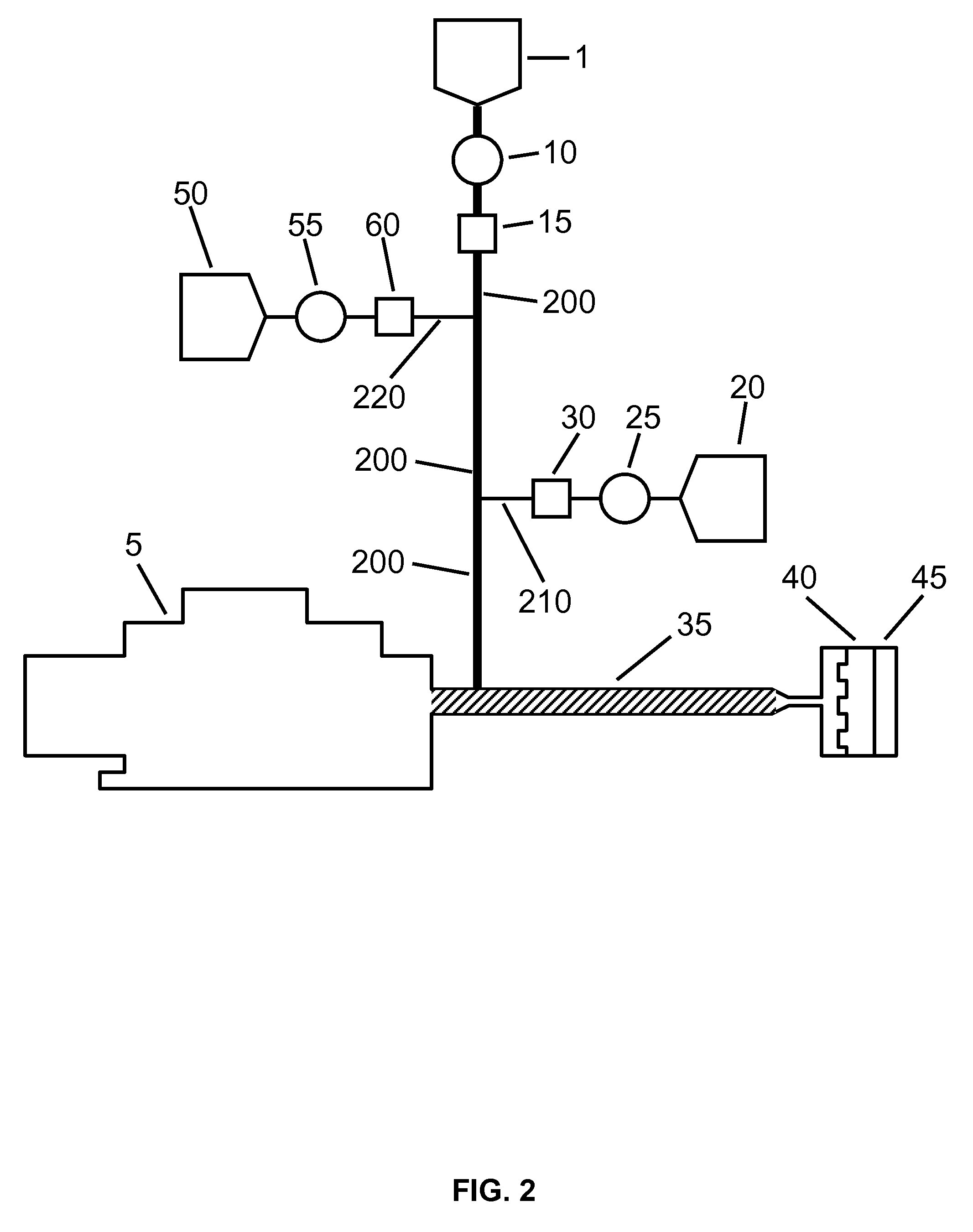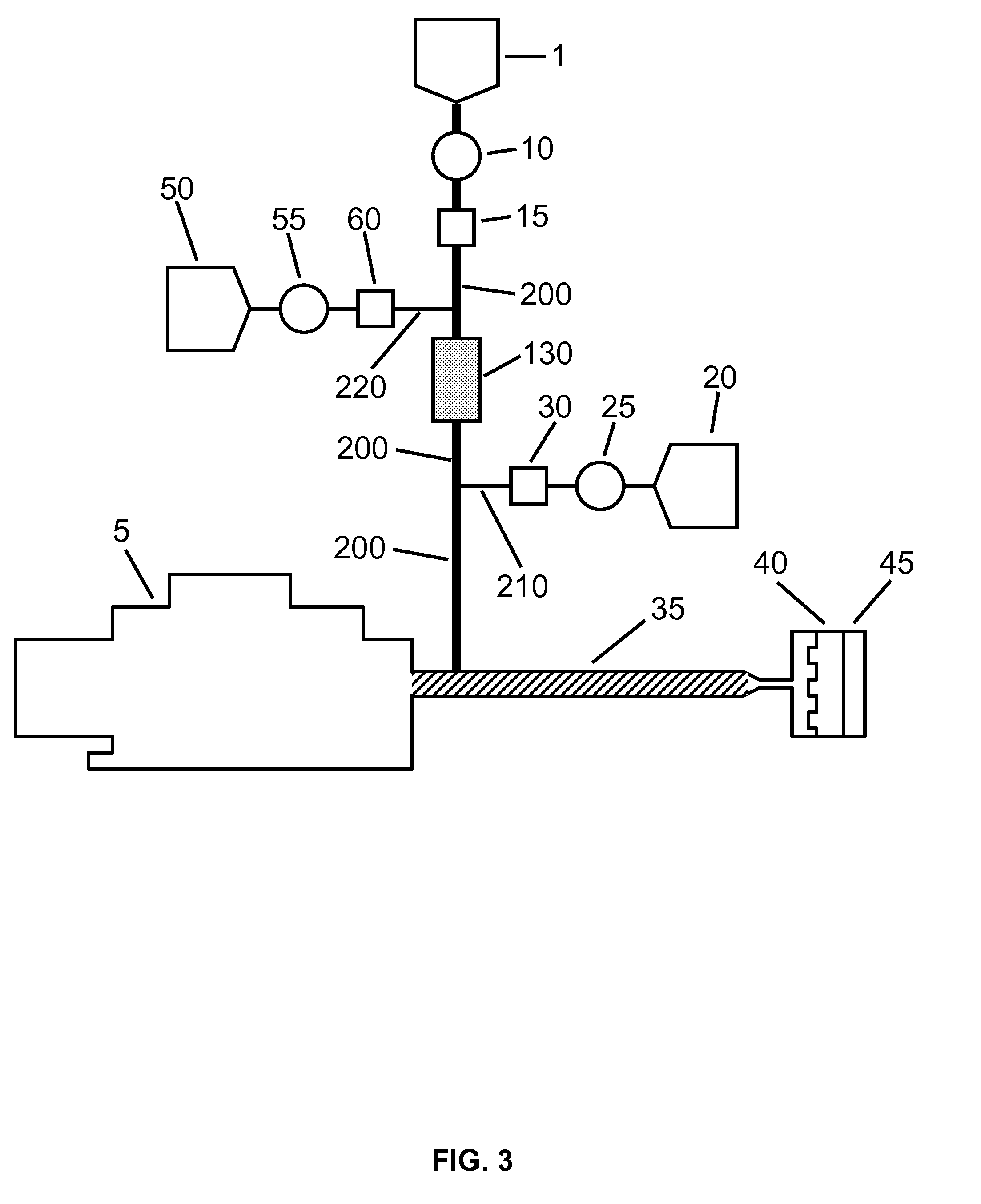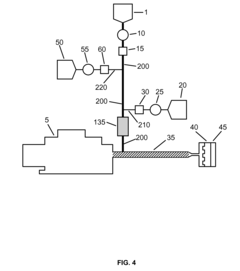How Silicone Rubber Bolsters Advanced Manufacturing Techniques?
JUL 8, 20259 MIN READ
Generate Your Research Report Instantly with AI Agent
Patsnap Eureka helps you evaluate technical feasibility & market potential.
Silicone Rubber in Advanced Manufacturing: Overview and Objectives
Silicone rubber has emerged as a pivotal material in advanced manufacturing techniques, revolutionizing various industries with its unique properties and versatile applications. This synthetic elastomer, composed of silicone-oxygen chains, offers a remarkable combination of flexibility, durability, and resistance to extreme temperatures and chemicals. As manufacturing processes continue to evolve, silicone rubber plays an increasingly crucial role in enhancing product performance, streamlining production, and enabling innovative designs.
The development of silicone rubber can be traced back to the 1930s, with significant advancements occurring in the following decades. Its adoption in manufacturing has grown exponentially due to its ability to withstand harsh environments and maintain its properties over extended periods. The material's evolution has been driven by the demand for more sophisticated and reliable components in industries such as aerospace, automotive, electronics, and healthcare.
In the context of advanced manufacturing, silicone rubber serves multiple purposes. It acts as a protective barrier, a flexible connector, a vibration dampener, and a thermal insulator. Its ability to be molded into complex shapes with high precision makes it ideal for creating intricate parts and components. Furthermore, the material's biocompatibility has opened up new possibilities in medical device manufacturing and implantable technologies.
The objectives of incorporating silicone rubber into advanced manufacturing techniques are multifaceted. Primarily, manufacturers aim to leverage its unique properties to enhance product performance and longevity. By utilizing silicone rubber, companies can develop more durable and reliable products that can withstand extreme conditions. Additionally, the material's flexibility allows for the creation of innovative designs that were previously impossible with traditional materials.
Another key objective is to improve manufacturing efficiency. Silicone rubber's ease of processing and ability to be used in various manufacturing methods, such as injection molding, extrusion, and 3D printing, contribute to faster production cycles and reduced waste. This aligns with the broader goals of advanced manufacturing to optimize resource utilization and increase productivity.
As we look towards the future, the role of silicone rubber in advanced manufacturing is expected to expand further. Ongoing research focuses on enhancing its properties, developing new formulations, and exploring novel applications. The integration of silicone rubber with other advanced materials and technologies, such as smart polymers and nanotechnology, promises to unlock even greater potential in manufacturing innovation.
The development of silicone rubber can be traced back to the 1930s, with significant advancements occurring in the following decades. Its adoption in manufacturing has grown exponentially due to its ability to withstand harsh environments and maintain its properties over extended periods. The material's evolution has been driven by the demand for more sophisticated and reliable components in industries such as aerospace, automotive, electronics, and healthcare.
In the context of advanced manufacturing, silicone rubber serves multiple purposes. It acts as a protective barrier, a flexible connector, a vibration dampener, and a thermal insulator. Its ability to be molded into complex shapes with high precision makes it ideal for creating intricate parts and components. Furthermore, the material's biocompatibility has opened up new possibilities in medical device manufacturing and implantable technologies.
The objectives of incorporating silicone rubber into advanced manufacturing techniques are multifaceted. Primarily, manufacturers aim to leverage its unique properties to enhance product performance and longevity. By utilizing silicone rubber, companies can develop more durable and reliable products that can withstand extreme conditions. Additionally, the material's flexibility allows for the creation of innovative designs that were previously impossible with traditional materials.
Another key objective is to improve manufacturing efficiency. Silicone rubber's ease of processing and ability to be used in various manufacturing methods, such as injection molding, extrusion, and 3D printing, contribute to faster production cycles and reduced waste. This aligns with the broader goals of advanced manufacturing to optimize resource utilization and increase productivity.
As we look towards the future, the role of silicone rubber in advanced manufacturing is expected to expand further. Ongoing research focuses on enhancing its properties, developing new formulations, and exploring novel applications. The integration of silicone rubber with other advanced materials and technologies, such as smart polymers and nanotechnology, promises to unlock even greater potential in manufacturing innovation.
Market Demand Analysis for Silicone Rubber in Manufacturing
The demand for silicone rubber in advanced manufacturing techniques has been steadily increasing due to its unique properties and versatile applications. The global silicone rubber market is experiencing significant growth, driven by the expanding manufacturing sector and the increasing adoption of advanced technologies. Industries such as automotive, aerospace, electronics, and healthcare are the primary consumers of silicone rubber in their manufacturing processes.
In the automotive industry, silicone rubber is extensively used for various components, including gaskets, seals, hoses, and electrical insulation. The growing trend towards electric and hybrid vehicles has further boosted the demand for silicone rubber, as it plays a crucial role in battery insulation and thermal management systems. The aerospace sector also relies heavily on silicone rubber for its high-performance characteristics, particularly in extreme temperature and pressure environments.
The electronics industry is another major consumer of silicone rubber in manufacturing. With the increasing miniaturization of electronic devices and the growing demand for wearable technology, silicone rubber is being used for encapsulation, protection, and insulation of sensitive components. Its excellent dielectric properties and resistance to environmental factors make it an ideal material for advanced electronic manufacturing.
In the healthcare sector, silicone rubber is widely used in medical device manufacturing, prosthetics, and implants. The material's biocompatibility, durability, and flexibility make it suitable for a wide range of medical applications. As the healthcare industry continues to innovate and develop new technologies, the demand for silicone rubber in medical manufacturing is expected to grow significantly.
The 3D printing industry has also begun to leverage silicone rubber for additive manufacturing processes. This emerging application is opening up new possibilities for customized and complex designs in various industries, further driving the demand for silicone rubber in advanced manufacturing techniques.
Market analysts predict that the global silicone rubber market will continue to expand at a compound annual growth rate (CAGR) of around 6% over the next five years. This growth is attributed to the increasing adoption of silicone rubber in emerging economies, ongoing technological advancements, and the material's superior properties compared to traditional rubber alternatives.
As manufacturers strive for improved product performance, durability, and efficiency, the demand for silicone rubber in advanced manufacturing techniques is expected to remain strong. The material's ability to withstand extreme conditions, its excellent electrical properties, and its compatibility with various manufacturing processes make it an indispensable component in modern industrial applications.
In the automotive industry, silicone rubber is extensively used for various components, including gaskets, seals, hoses, and electrical insulation. The growing trend towards electric and hybrid vehicles has further boosted the demand for silicone rubber, as it plays a crucial role in battery insulation and thermal management systems. The aerospace sector also relies heavily on silicone rubber for its high-performance characteristics, particularly in extreme temperature and pressure environments.
The electronics industry is another major consumer of silicone rubber in manufacturing. With the increasing miniaturization of electronic devices and the growing demand for wearable technology, silicone rubber is being used for encapsulation, protection, and insulation of sensitive components. Its excellent dielectric properties and resistance to environmental factors make it an ideal material for advanced electronic manufacturing.
In the healthcare sector, silicone rubber is widely used in medical device manufacturing, prosthetics, and implants. The material's biocompatibility, durability, and flexibility make it suitable for a wide range of medical applications. As the healthcare industry continues to innovate and develop new technologies, the demand for silicone rubber in medical manufacturing is expected to grow significantly.
The 3D printing industry has also begun to leverage silicone rubber for additive manufacturing processes. This emerging application is opening up new possibilities for customized and complex designs in various industries, further driving the demand for silicone rubber in advanced manufacturing techniques.
Market analysts predict that the global silicone rubber market will continue to expand at a compound annual growth rate (CAGR) of around 6% over the next five years. This growth is attributed to the increasing adoption of silicone rubber in emerging economies, ongoing technological advancements, and the material's superior properties compared to traditional rubber alternatives.
As manufacturers strive for improved product performance, durability, and efficiency, the demand for silicone rubber in advanced manufacturing techniques is expected to remain strong. The material's ability to withstand extreme conditions, its excellent electrical properties, and its compatibility with various manufacturing processes make it an indispensable component in modern industrial applications.
Current State and Challenges in Silicone Rubber Applications
Silicone rubber has become an integral material in advanced manufacturing techniques, offering unique properties that enhance various industrial processes. The current state of silicone rubber applications is characterized by widespread adoption across multiple sectors, including automotive, aerospace, electronics, and medical industries. Its versatility, durability, and adaptability have made it a preferred choice for numerous high-performance applications.
In the automotive industry, silicone rubber is extensively used for gaskets, seals, and hoses, providing excellent resistance to extreme temperatures and chemicals. The aerospace sector relies on silicone rubber for its lightweight properties and ability to withstand harsh environmental conditions, utilizing it in aircraft components and insulation materials. In electronics manufacturing, silicone rubber serves as an essential material for encapsulation, protection, and thermal management of sensitive components.
Despite its widespread use, the application of silicone rubber in advanced manufacturing faces several challenges. One significant hurdle is the need for improved precision in molding and shaping processes. As manufacturing tolerances become tighter, there is a growing demand for silicone rubber components with higher dimensional accuracy and consistency. This challenge requires advancements in molding technologies and material formulations to achieve the required precision.
Another challenge lies in enhancing the mechanical properties of silicone rubber for specific applications. While silicone rubber exhibits excellent flexibility and elasticity, there is a constant push to improve its strength, tear resistance, and abrasion resistance without compromising its inherent beneficial properties. This necessitates ongoing research and development in material science to create new silicone rubber formulations with enhanced mechanical characteristics.
The integration of silicone rubber with other materials and manufacturing processes also presents challenges. As advanced manufacturing techniques increasingly rely on multi-material systems, ensuring compatibility and strong adhesion between silicone rubber and other materials becomes crucial. This includes developing effective bonding techniques and surface treatments to improve adhesion properties.
Furthermore, the growing emphasis on sustainability and environmental concerns poses challenges for silicone rubber applications. There is a need to develop more eco-friendly production processes, reduce waste, and improve the recyclability of silicone rubber products. This challenge requires innovative approaches to material design, manufacturing processes, and end-of-life considerations.
Lastly, the cost-effectiveness of silicone rubber in certain applications remains a challenge. While its unique properties make it indispensable in many areas, the relatively high cost of silicone rubber compared to some alternative materials can limit its adoption in price-sensitive markets. Addressing this challenge involves optimizing production processes, exploring new raw material sources, and developing more cost-effective formulations without compromising performance.
In the automotive industry, silicone rubber is extensively used for gaskets, seals, and hoses, providing excellent resistance to extreme temperatures and chemicals. The aerospace sector relies on silicone rubber for its lightweight properties and ability to withstand harsh environmental conditions, utilizing it in aircraft components and insulation materials. In electronics manufacturing, silicone rubber serves as an essential material for encapsulation, protection, and thermal management of sensitive components.
Despite its widespread use, the application of silicone rubber in advanced manufacturing faces several challenges. One significant hurdle is the need for improved precision in molding and shaping processes. As manufacturing tolerances become tighter, there is a growing demand for silicone rubber components with higher dimensional accuracy and consistency. This challenge requires advancements in molding technologies and material formulations to achieve the required precision.
Another challenge lies in enhancing the mechanical properties of silicone rubber for specific applications. While silicone rubber exhibits excellent flexibility and elasticity, there is a constant push to improve its strength, tear resistance, and abrasion resistance without compromising its inherent beneficial properties. This necessitates ongoing research and development in material science to create new silicone rubber formulations with enhanced mechanical characteristics.
The integration of silicone rubber with other materials and manufacturing processes also presents challenges. As advanced manufacturing techniques increasingly rely on multi-material systems, ensuring compatibility and strong adhesion between silicone rubber and other materials becomes crucial. This includes developing effective bonding techniques and surface treatments to improve adhesion properties.
Furthermore, the growing emphasis on sustainability and environmental concerns poses challenges for silicone rubber applications. There is a need to develop more eco-friendly production processes, reduce waste, and improve the recyclability of silicone rubber products. This challenge requires innovative approaches to material design, manufacturing processes, and end-of-life considerations.
Lastly, the cost-effectiveness of silicone rubber in certain applications remains a challenge. While its unique properties make it indispensable in many areas, the relatively high cost of silicone rubber compared to some alternative materials can limit its adoption in price-sensitive markets. Addressing this challenge involves optimizing production processes, exploring new raw material sources, and developing more cost-effective formulations without compromising performance.
Existing Solutions Utilizing Silicone Rubber in Manufacturing
01 Composition and preparation of silicone rubber
Silicone rubber is typically composed of silicone polymers, fillers, and curing agents. The preparation process often involves mixing these components, shaping the mixture, and then curing it to form the final rubber product. Various additives can be incorporated to modify properties such as strength, flexibility, and heat resistance.- Composition and preparation of silicone rubber: Silicone rubber is typically composed of silicone polymers, fillers, and curing agents. The preparation process often involves mixing these components, shaping the mixture, and then curing it to form the final rubber product. Various additives can be incorporated to enhance specific properties such as strength, heat resistance, or electrical insulation.
- Modification of silicone rubber properties: The properties of silicone rubber can be modified through the addition of specific compounds or by altering the molecular structure. This can include improving tear strength, increasing elasticity, enhancing chemical resistance, or adjusting the hardness of the material. Such modifications allow for the customization of silicone rubber for various applications.
- Silicone rubber in medical and healthcare applications: Silicone rubber is widely used in medical and healthcare applications due to its biocompatibility, flexibility, and durability. It is used in various medical devices, implants, prosthetics, and drug delivery systems. The material can be formulated to meet specific medical requirements such as sterilization resistance and long-term stability in the human body.
- Silicone rubber in electronic and electrical applications: Silicone rubber is extensively used in electronic and electrical applications due to its excellent insulating properties, heat resistance, and flexibility. It is used in the production of cables, connectors, keypads, and various other electronic components. The material can be formulated to provide specific electrical characteristics or to meet flame retardancy standards.
- Environmental and high-performance silicone rubber: Research and development efforts are focused on creating environmentally friendly and high-performance silicone rubber formulations. This includes developing bio-based silicone rubbers, improving recyclability, and enhancing performance in extreme conditions such as high temperatures or harsh chemical environments. Advanced silicone rubber composites are also being developed for specialized applications in aerospace and automotive industries.
02 Modification of silicone rubber properties
The properties of silicone rubber can be modified through the addition of specific compounds or by altering the molecular structure. This can include improving mechanical strength, enhancing thermal stability, or increasing chemical resistance. Techniques may involve blending with other polymers or incorporating nanoparticles.Expand Specific Solutions03 Applications of silicone rubber
Silicone rubber finds wide-ranging applications due to its unique properties. It is used in medical devices, automotive parts, electrical insulation, and consumer products. Its biocompatibility, heat resistance, and flexibility make it suitable for diverse industrial and commercial uses.Expand Specific Solutions04 Curing methods for silicone rubber
Various curing methods are employed for silicone rubber, including heat curing, room temperature vulcanization (RTV), and UV curing. Each method affects the final properties of the rubber differently and is chosen based on the specific application requirements and manufacturing constraints.Expand Specific Solutions05 Environmental and safety considerations
Research and development in silicone rubber technology also focuses on environmental and safety aspects. This includes developing eco-friendly formulations, reducing volatile organic compound emissions during production, and ensuring the safety of silicone rubber products in various applications, particularly in medical and food-contact uses.Expand Specific Solutions
Key Players in Silicone Rubber and Advanced Manufacturing
The silicone rubber industry is in a mature growth phase, with a global market size expected to reach $9.34 billion by 2026. The technology's maturity is evident in its widespread adoption across various manufacturing sectors, particularly in advanced applications. Key players like Shin-Etsu Chemical, Momentive Performance Materials, and Dow Silicones Corp. are driving innovation in high-performance silicone rubber formulations. These companies, along with others such as Wacker Chemie and Bluestar Silicones, are focusing on developing specialized products for emerging applications in electronics, automotive, and healthcare industries. The competitive landscape is characterized by ongoing R&D efforts to enhance material properties and expand application possibilities in advanced manufacturing techniques.
Shin-Etsu Chemical Co., Ltd.
Technical Solution: Shin-Etsu Chemical has developed advanced silicone rubber compounds specifically designed for advanced manufacturing techniques. Their liquid silicone rubber (LSR) technology enables precision molding of complex shapes with excellent dimensional stability[1]. The company's silicone elastomers feature high heat resistance up to 200°C and maintain flexibility at extremely low temperatures, making them ideal for automotive and aerospace applications[2]. Shin-Etsu has also introduced self-adhesive silicone rubbers that bond directly to various substrates without primers, streamlining production processes in electronics and medical device manufacturing[3].
Strengths: Wide range of specialized formulations, high-performance characteristics, and innovative self-adhesive technology. Weaknesses: Potentially higher cost compared to conventional rubber materials, may require specialized processing equipment.
LANXESS Deutschland GmbH
Technical Solution: LANXESS has developed high-performance silicone rubber compounds that enhance advanced manufacturing processes across various industries. Their Keltan® Magnum™ EPDM rubber technology, when combined with silicone, offers excellent heat and chemical resistance for automotive under-hood applications[10]. The company's liquid silicone rubber (LSR) formulations enable precision molding of intricate components with minimal flash, reducing post-processing requirements in consumer goods and medical device production[11]. LANXESS has also introduced flame-retardant silicone elastomers that meet stringent safety standards for electrical and electronic applications, supporting the trend towards miniaturization and increased functionality[12].
Strengths: Broad product portfolio spanning multiple rubber technologies, strong research and development capabilities, global manufacturing footprint. Weaknesses: Potential exposure to raw material price fluctuations, may face challenges in markets transitioning away from traditional automotive technologies.
Core Innovations in Silicone Rubber Technology
Method of manufacturing integral molded products out of silicone rubber
PatentWO1997020679A1
Innovation
- The use of a silicone rubber sheet with excellent elasticity, stretchability, heat resistance, and chemical stability, which allows for uniform application and easy release, facilitating precise timing of pressurization and reducing the risk of cracks and unreacted parts.
Method for Producing Molded Silicone Rubber Products Using Liquid Silicone Rubber
PatentActiveUS20110245403A1
Innovation
- A single LSR base comprising vinyl siloxane polymers and silicone hydride crosslinkers, with optional components like inhibitors and fillers, is used, along with separate catalyst and inhibitor master batches, which are fed into an injection molding machine through distinct entry points for precise control and mixing, eliminating the need for static or dynamic mixers in the feed line.
Environmental Impact and Sustainability of Silicone Rubber
Silicone rubber, a versatile and widely used material in advanced manufacturing, has significant environmental implications and sustainability considerations. The production of silicone rubber involves the use of silica, a naturally abundant resource, which reduces the reliance on petroleum-based raw materials. This aspect contributes to its overall sustainability profile, as it lessens the dependence on non-renewable resources.
However, the manufacturing process of silicone rubber does have environmental impacts that need to be addressed. The production of silicone polymers requires energy-intensive processes and the use of certain chemicals that can have potential environmental consequences if not properly managed. Efforts are being made to optimize these processes and reduce energy consumption, thereby minimizing the carbon footprint associated with silicone rubber production.
One of the key environmental advantages of silicone rubber is its durability and longevity. Products made from silicone rubber often have extended lifespans compared to alternatives, reducing the need for frequent replacements and ultimately decreasing waste generation. Additionally, silicone rubber's resistance to extreme temperatures and weathering contributes to its long-term performance in various applications, further enhancing its sustainability credentials.
In terms of end-of-life considerations, silicone rubber presents both challenges and opportunities. While it is not biodegradable, silicone rubber can be recycled through specialized processes. These recycling methods involve breaking down the material into its constituent parts, which can then be used to create new silicone products or as additives in other materials. However, the infrastructure for silicone rubber recycling is still developing, and more widespread adoption of these recycling technologies is needed to fully realize the material's circular economy potential.
The use of silicone rubber in advanced manufacturing techniques also contributes to sustainability through improved product performance and efficiency. For instance, in automotive and aerospace applications, silicone rubber components can help reduce vehicle weight, leading to improved fuel efficiency and reduced emissions. Similarly, in renewable energy technologies such as solar panels and wind turbines, silicone rubber plays a crucial role in enhancing durability and performance, contributing to the overall sustainability of these clean energy solutions.
As environmental concerns continue to shape industrial practices, ongoing research and development efforts are focused on enhancing the sustainability of silicone rubber. This includes exploring bio-based alternatives for certain components, improving production efficiencies, and developing more effective recycling and upcycling methods. These advancements aim to further reduce the environmental impact of silicone rubber while maintaining its valuable properties for advanced manufacturing applications.
However, the manufacturing process of silicone rubber does have environmental impacts that need to be addressed. The production of silicone polymers requires energy-intensive processes and the use of certain chemicals that can have potential environmental consequences if not properly managed. Efforts are being made to optimize these processes and reduce energy consumption, thereby minimizing the carbon footprint associated with silicone rubber production.
One of the key environmental advantages of silicone rubber is its durability and longevity. Products made from silicone rubber often have extended lifespans compared to alternatives, reducing the need for frequent replacements and ultimately decreasing waste generation. Additionally, silicone rubber's resistance to extreme temperatures and weathering contributes to its long-term performance in various applications, further enhancing its sustainability credentials.
In terms of end-of-life considerations, silicone rubber presents both challenges and opportunities. While it is not biodegradable, silicone rubber can be recycled through specialized processes. These recycling methods involve breaking down the material into its constituent parts, which can then be used to create new silicone products or as additives in other materials. However, the infrastructure for silicone rubber recycling is still developing, and more widespread adoption of these recycling technologies is needed to fully realize the material's circular economy potential.
The use of silicone rubber in advanced manufacturing techniques also contributes to sustainability through improved product performance and efficiency. For instance, in automotive and aerospace applications, silicone rubber components can help reduce vehicle weight, leading to improved fuel efficiency and reduced emissions. Similarly, in renewable energy technologies such as solar panels and wind turbines, silicone rubber plays a crucial role in enhancing durability and performance, contributing to the overall sustainability of these clean energy solutions.
As environmental concerns continue to shape industrial practices, ongoing research and development efforts are focused on enhancing the sustainability of silicone rubber. This includes exploring bio-based alternatives for certain components, improving production efficiencies, and developing more effective recycling and upcycling methods. These advancements aim to further reduce the environmental impact of silicone rubber while maintaining its valuable properties for advanced manufacturing applications.
Regulatory Compliance for Silicone Rubber in Manufacturing
Regulatory compliance for silicone rubber in manufacturing is a critical aspect that ensures the safety, quality, and legal conformity of products across various industries. As silicone rubber continues to play an increasingly important role in advanced manufacturing techniques, adherence to regulatory standards has become paramount.
In the United States, the Food and Drug Administration (FDA) oversees the use of silicone rubber in food contact applications and medical devices. Manufacturers must ensure their silicone rubber products comply with FDA regulations, such as 21 CFR 177.2600 for food contact materials and the relevant sections of 21 CFR for medical devices. These regulations specify the acceptable composition, processing methods, and testing requirements for silicone rubber materials.
The European Union has implemented the Registration, Evaluation, Authorization, and Restriction of Chemicals (REACH) regulation, which affects the use of silicone rubber in manufacturing. Manufacturers must register substances used in silicone rubber production and provide safety data to the European Chemicals Agency (ECHA). Additionally, the EU's Restriction of Hazardous Substances (RoHS) directive limits the use of certain hazardous substances in electrical and electronic equipment, impacting silicone rubber components in these applications.
In the automotive industry, silicone rubber components must comply with standards set by organizations such as the International Organization for Standardization (ISO) and the Society of Automotive Engineers (SAE). These standards ensure the reliability and performance of silicone rubber parts under various operating conditions.
For aerospace applications, silicone rubber must meet stringent requirements set by agencies like the Federal Aviation Administration (FAA) and the European Aviation Safety Agency (EASA). These regulations cover aspects such as fire resistance, outgassing properties, and long-term durability in extreme environments.
Manufacturers must also consider environmental regulations when using silicone rubber in their processes. Many countries have implemented restrictions on volatile organic compounds (VOCs) emissions, which can affect the curing and processing of silicone rubber. Compliance with these regulations often requires the use of low-VOC or VOC-free silicone formulations.
To ensure regulatory compliance, manufacturers typically implement robust quality management systems, such as ISO 9001, and maintain detailed documentation of their manufacturing processes and material compositions. Regular audits and testing are conducted to verify ongoing compliance with relevant standards and regulations.
As advanced manufacturing techniques continue to evolve, regulatory bodies are likely to update and introduce new standards to address emerging technologies and applications of silicone rubber. Manufacturers must stay informed about these changes and adapt their processes accordingly to maintain compliance and remain competitive in the global market.
In the United States, the Food and Drug Administration (FDA) oversees the use of silicone rubber in food contact applications and medical devices. Manufacturers must ensure their silicone rubber products comply with FDA regulations, such as 21 CFR 177.2600 for food contact materials and the relevant sections of 21 CFR for medical devices. These regulations specify the acceptable composition, processing methods, and testing requirements for silicone rubber materials.
The European Union has implemented the Registration, Evaluation, Authorization, and Restriction of Chemicals (REACH) regulation, which affects the use of silicone rubber in manufacturing. Manufacturers must register substances used in silicone rubber production and provide safety data to the European Chemicals Agency (ECHA). Additionally, the EU's Restriction of Hazardous Substances (RoHS) directive limits the use of certain hazardous substances in electrical and electronic equipment, impacting silicone rubber components in these applications.
In the automotive industry, silicone rubber components must comply with standards set by organizations such as the International Organization for Standardization (ISO) and the Society of Automotive Engineers (SAE). These standards ensure the reliability and performance of silicone rubber parts under various operating conditions.
For aerospace applications, silicone rubber must meet stringent requirements set by agencies like the Federal Aviation Administration (FAA) and the European Aviation Safety Agency (EASA). These regulations cover aspects such as fire resistance, outgassing properties, and long-term durability in extreme environments.
Manufacturers must also consider environmental regulations when using silicone rubber in their processes. Many countries have implemented restrictions on volatile organic compounds (VOCs) emissions, which can affect the curing and processing of silicone rubber. Compliance with these regulations often requires the use of low-VOC or VOC-free silicone formulations.
To ensure regulatory compliance, manufacturers typically implement robust quality management systems, such as ISO 9001, and maintain detailed documentation of their manufacturing processes and material compositions. Regular audits and testing are conducted to verify ongoing compliance with relevant standards and regulations.
As advanced manufacturing techniques continue to evolve, regulatory bodies are likely to update and introduce new standards to address emerging technologies and applications of silicone rubber. Manufacturers must stay informed about these changes and adapt their processes accordingly to maintain compliance and remain competitive in the global market.
Unlock deeper insights with Patsnap Eureka Quick Research — get a full tech report to explore trends and direct your research. Try now!
Generate Your Research Report Instantly with AI Agent
Supercharge your innovation with Patsnap Eureka AI Agent Platform!


